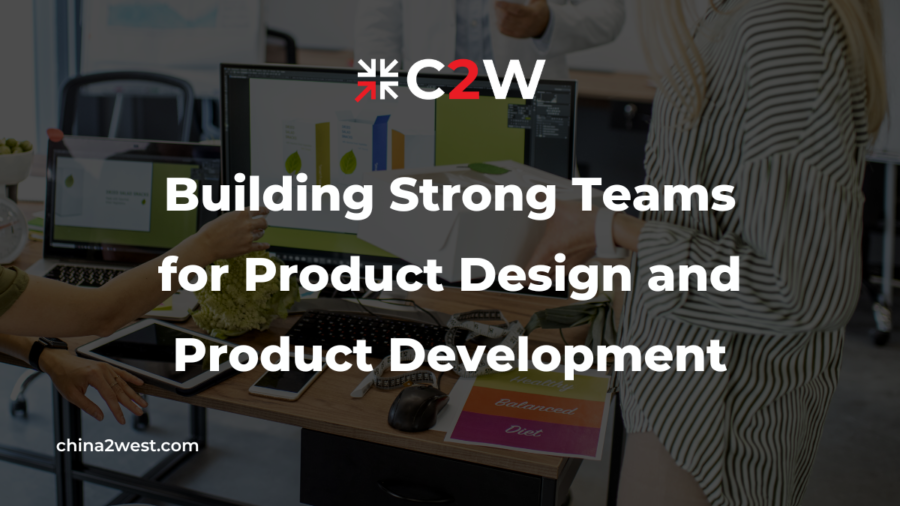When famous entrepreneur Richard Branson was asked about his secret to success, many expected him to talk about innovative ideas or his famous marketing approach.
But he didn’t. Instead, he said this: “Employees come first. If you take care of your employees, they will take care of the clients.” Many business owners will agree with this sentiment. Talented teams matter.
If you plan to launch a new product, you need to start by putting together the best team. Read on for tips on building strong product design and product development teams.
Define Your Objectives
Before building a team, you need to know your high-level objectives. Do this for both the design and development phases of your project.
For example, in the prototype design phase, your objectives might be to generate an idea, an illustration, and product specifications.
It requires a lot of creative thinking, and you’ll probably take an iterative approach to your design. So, you need a team to work closely to pull that design together.
In contrast, development often begins with rapid prototyping. You’ll need teams who understand how to build and turn prototypes into a complete manufacturing process.
Establishing these objectives will help you prioritize the qualities you need. It will also give you a better sense of whether you should do each stage in-house, outsource, or combine both.
Prioritize Core Competencies
Understanding your objectives is a good starting point for establishing a team. But after that, you need clarity on the types of people you need- your team’s core competencies, in other words.
The skills you need will depend on your project. Still, some likely qualities for a product design team include creative thinking, graphics or user experience design, and market research.
A product development team will include engineers, manufacturing leads, and quality assurance experts. Problem-solving and planning skills will be sought-after competencies.
You may be planning to outsource your development and manufacturing. In that case, some of these qualities will be sought in a partner rather than internally.
Supply chain management is also necessary if you use external business at any point during your product development.
Outsourced Teams Vs. Internal Teams: What to Consider
At some point, when building a team, you’ll need to determine which team roles to keep in-house and which to outsource. The best way to evaluate this is to examine your current internal capabilities.
That isn’t just about having the right people but also processes, training, and leadership for those roles.
If you lack that as a core competency in-house, you may find outsourcing quicker and more effective.
For example, if you are manufacturing overseas, it’ll be more advantageous to partner with a business that already knows the process and how to establish a highly competent team.
Remember that an effective team can make a big difference in your project. Strong teams can make things happen faster, lower the risks, and have the expertise and experience to produce a better end product.
How to Build an Internal Team
First, assess your current capabilities. You may already have in-house people who can form a new team for your product design and development. Speak to line managers to better understand people’s skills and interests.
That will also help you spot the gaps you need to fill with either recruitment or training.
Make sure you have a well-rounded team with a balance of qualities. That means more than versatile skill sets- a balance of personalities is also essential.
Create a training plan for the team and prioritize specific knowledge they will need for the project.
Remember the importance of fostering a positive culture. You might consider arranging a team-building day if the team hasn’t worked together.
Outsourced Product Development
Outsourcing is increasingly popular because you can tap into established expertise and experience without starting from scratch.
That can be advantageous if you have a project ready to go and want to start the design or development stages immediately. Plus, it can often be more cost-effective than investing in a lengthy and expensive recruitment and training process.
However, you must do your due diligence. Assess the partner on their experience in the industry.
Evidence of a high-quality track record will be necessary here. You also want assurance a partner has the capacity for the project.
If you are considering a partner who can help with overseas product development, ensure they have experience in that culture. That will help you leap any cultural or language barrier that could slow a project.
Finally, once you have chosen a partner, ensure you take the time to create a clear and robust contract. It should delineate roles and responsibilities across the internal and outsourced teams.
Setting Up and Managing Your Team
Communication will be central to your new team. So invest in the best communication and collaboration tools. Set rules and expectations about how teams should communicate with one another.
Remember, one communication approach is often superior depending on the type of conversation.
In some instances, you’ll want things documented by email. Other times, a Facetime call can resolve an issue faster. If you have an overseas component, make sure you have people in that location who can oversee what’s happening in person.
Document your project design and development goals. That way, your team will have clear expectations from day one.
Remember to align that with your quality process. Keep monitoring project deadlines-a project plan shared by all your team will be essential.
Set aside time for regular check-ins with the team. Allow people to air their thoughts and feelings and get an update on everyone’s progress. Use a problem-solving approach to dealing with team challenges or clashes.
Building Strong Teams for Product Design and Product Development
At the heart of any innovative or impressive product lies a talented team. These teams have universal qualities. They are creative, have fantastic team spirit, and have exceptional problem-solving ability.
Use this guide to help you assemble a top team for product design and product development, and you will reap the benefits.
If you plan on manufacturing in China, China2West has the solution to building that winning team.
With almost twenty years of experience in Chinese supply chains and manufacturing, our expert consultants can help you get the most out of Chinese manufacturing. Contact us here for more information.


